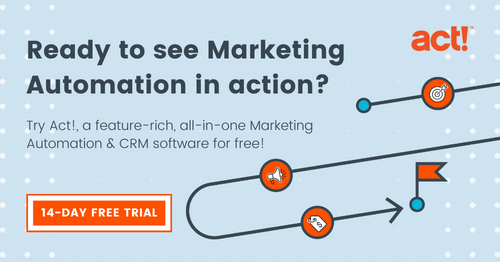
Email marketing is invaluable for helping financial advisors cultivate long-term clients and provide them with lasting, tangible value. But how can you ensure your emails are read and don’t disappear into the dreaded spam folder or promotions tab?
This article explains how to set up and run a successful email marketing strategy that is unique, impactful, and useful for your clients.
What does email marketing for financial advisors look like?
Email is a powerful channel for engaging customers and generating a strong return on your marketing investment. Current research shows that businesses have the potential to earn $36 for every dollar spent on email marketing.
That’s because it’s an effective channel to inform, support, upsell, and educate your clients. Email newsletters, for example, can share market changes, financial sector news, and other valuable information. Personalised but automated emails can relay portfolio updates or remind clients of appointments.
Reminder emails before annual review appointments can encourage clients to top up their registered accounts. Trickle campaigns can build rapport with prospects until they’re ready to book that first call with you. Email strategy will look different based on your prospects’ or clients’ needs and where they are in their financial journey.
Begin your next campaign in 8 easy steps
Email marketing is a popular method for generating leads for financial advisors. But what does it take to have a successful email campaign? Here are our email marketing tips and best practices for drafting your financial advisor email marketing campaign.
Step 1: Start with a strategy and a target audience
The ongoing growth of email marketing presents many opportunities for financial advisors. What kind of client are you trying to reach? Research which email marketing automation models are ideal for your target audience. What financial milestones or life events are your clients experiencing? Think about how you will keep subscribers engaged with value props and lead magnets.
Step 2: Segment your subscribers
Optimise open rates by getting to know your target audience and organising them into geographic, demographic, psychographic, and behavioural segmentations. Personalised campaigns increase click-through rates by 139 percent because the messaging engages each recipient more directly.
Step 3: Provide social proof
Use email to make your communications approachable and genuine when presenting your services. The best way to do this is to include clear email subject lines and messages with personal touches, such as information about your clients’ average investing returns, financial goal completions, or retirement success stories. Include reviews, data, and testimonials from client success stories in your emails. Demonstrate trustworthiness with a clear track record of wins and don’t be afraid to ask for referrals.
Step 4: Include clear CTAs
What action do you want your subscribers to take? What results are you hoping to gain? Offer opportunities for readers to engage with your financial services and content, like whitepapers or webinars, in follow-up emails. When you create emails with valuable content the CTAs will naturally convert.
Step 5: Format with the reader in mind
Format information in your emails so that clients can easily understand it. Focus on painting a picture of what you do and sharing the potential benefits of your advising services—but keep your descriptions short and to the point.
Your emails should be compelling enough to get recipients to open them and valuable enough for them to stick around. Include a call-to-action section with an enticing offer or incentive if you include information on your financial planning or investing services. Link to your website or landing page so they can learn more about your business or book a discovery call.
Step 6: Get the timing right
According to a recent Databox survey of email marketers, around 33 percent of marketing campaigns run weekly, and 26 percent run a few times per month. There are no hard-and-fast rules for timing or frequency; monitor what’s working and adjust accordingly. Measure the effectiveness of a given campaign by monitoring unsubscribe, click-through, and unopened message rates.
Step 7: Ask for feedback and learn from your clients
Building a two-way relationship with your email list is vital. Encourage subscribers to hit reply, book a call, or take a survey. Use A/B testing to send multiple versions of emails and learn how various subsets of your subscribers may respond to different approaches.
Step 8: Find and use the right tools to your advantage

The best marketing automation tools include professionally designed email templates and easy-to-use template editors so you can quickly create polished and personalised messages to attract new prospects while keeping your current clients engaged. With the right software, you can stay in close contact with your audience, manage your sender reputation and opt-ins, monitor and optimise engagement, capture leads, and follow up with them in your customer relationship management (CRM) software.
Launching Your First Email Marketing Campaign
If you are ready to see how email marketing can help create clients for life, try Act! free for 14 days to see how an all-in-one email marketing and CRM solution makes email marketing enjoyable and efficient. Act! proudly empowers SMBs, and accommodates the unique ways you run your advising business by offering unparalleled flexibility and freedom of choice.







